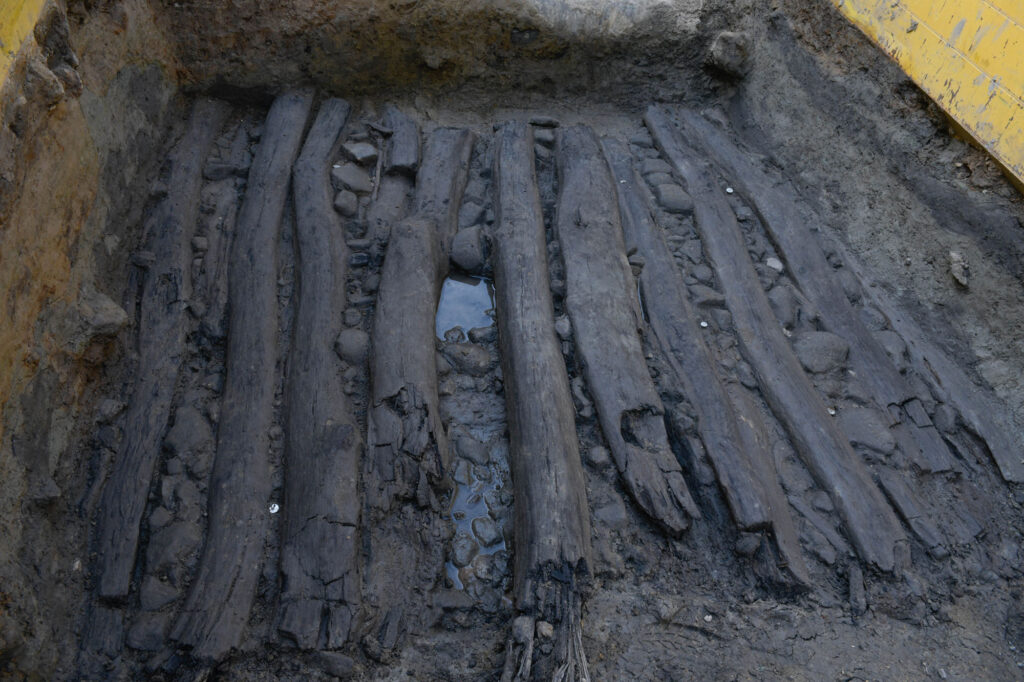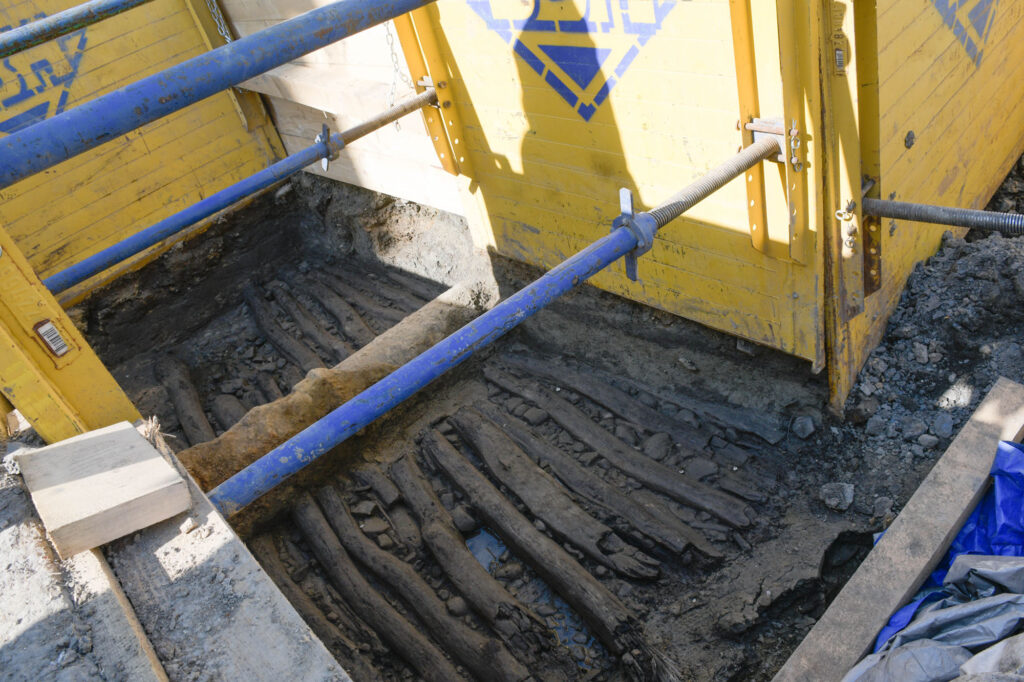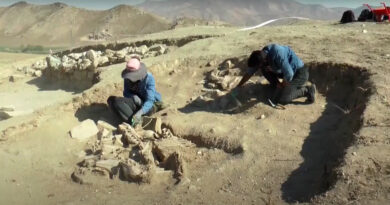1000-Year-Old Wagon Road Made Of Wood To Cross Medieval Swamp Unearthed In City Centre
Workers rebuilding a city’s heating network have discovered an ancient section of road made of wood in a way that was used in the Middle Ages to allow wagons to cross swampy areas.
The remarkable discovery survived because it had been buried under a layer of clay, which when it was removed revealed that the ground had been covered with oak wood, and filled in with stones.
Archaeologists say it was a way of ensuring that the road would remain passable for wagon transportation in the Middle Ages before tarmac and concrete.

The almost perfectly preserved section of road made out of wooden oak planks was discovered by accident by workers from the Dortmund Energy and Water Supply Company while rebuilding the city’s heating network.
The 6-metre-wide (20-foot-wide) wooden road was found 1.8 metres (5.9 feet) below Kaiserstrasse Street and the Ostwall road following the old city walls in the centre of the German city of Dortmund.
According to experts, the medieval street is unusually well preserved because it was airtight and damp under a layer of clay.

In addition, Dortmund’s spokesperson Katrin Pinetzki told Newsflash that the old timber which covers an area of approximately 8 square metres (86 square feet) is believed to be older than any other previously known path in the area.
In order to determine the exact age of the planks, wood samples were sent to a laboratory in Miami where they were examined using radiocarbon dating (C14 method).
Radiocarbon dating (also referred to as carbon dating or carbon-14 dating) is a method for determining the age of an object containing organic material by using the properties of radiocarbon.

The results revealed that the wooden road was at least 800 to 1000 years old and date back to the medieval period.
Archaeologist Ingmar Luther, 40, said: “In swampy areas oak planks were laid out and wedged with river rubble” in order to secure crossing of ox carts through damp places.
According to him, the planks probably belong to the old Hellweg Route which is a cycle route that passed through the city of Dortmund and to the cities of Soest and Paderborn.

Pinetzki also mentioned that the restoration process has already begun since every minute spent in contact with air might cause irreparable damage to the oak.
The planks will remain conserved in a special bath in the Archaeological Museum Schloss Gottorf in the German state of Schleswig-Holstein until it is safe to exhibit them in the city of Dortmund.
According to the City of Dortmund, swamps were already a problem when the settlement was first founded. It was only in the 19th Century that the issue of swampy streets was finally solved, when they were paved.



